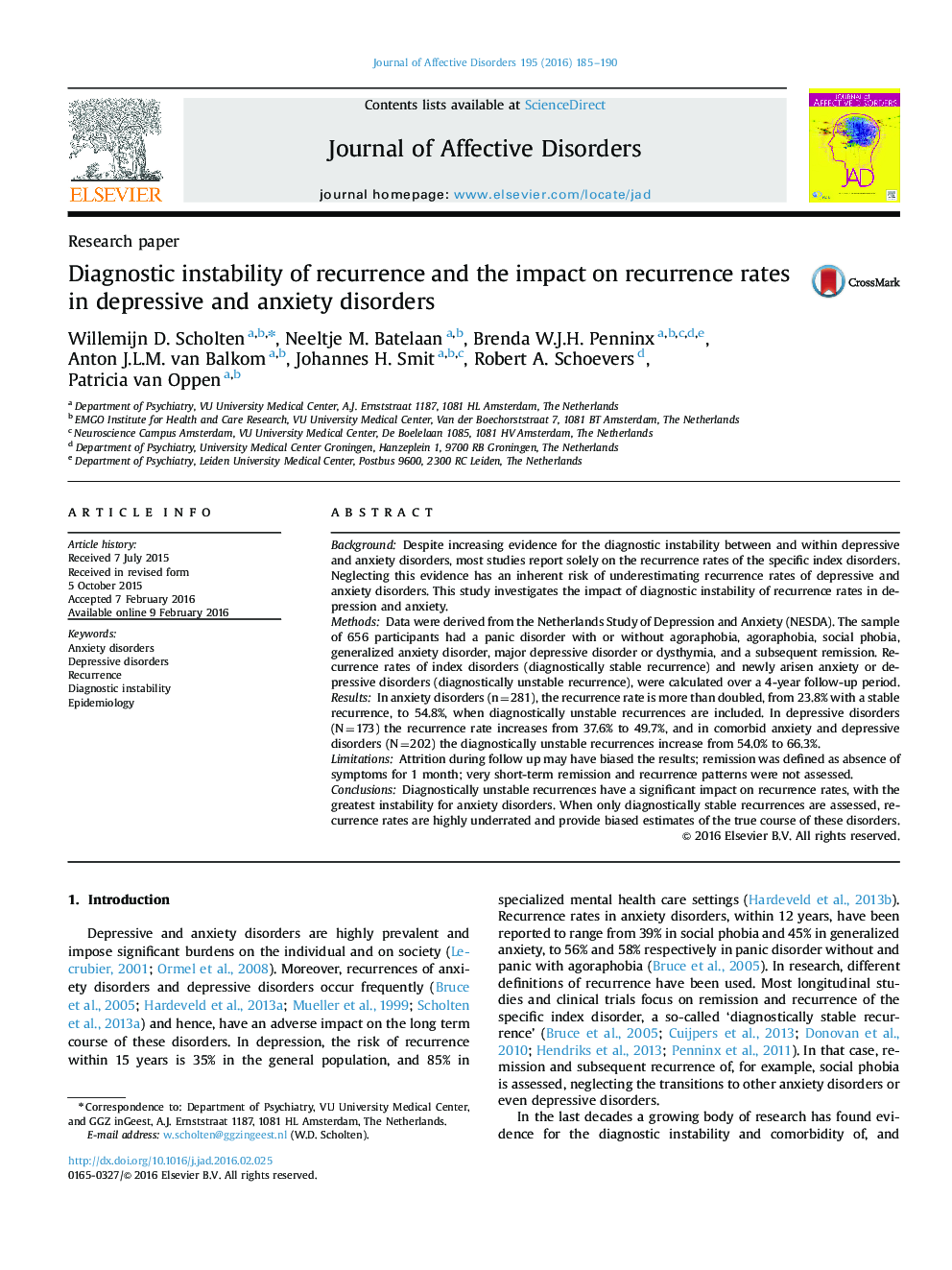| Article ID | Journal | Published Year | Pages | File Type |
|---|---|---|---|---|
| 6230406 | Journal of Affective Disorders | 2016 | 6 Pages |
â¢57% of patients have a recurrence of any depressive or anxiety disorder in 4 years.â¢Recurrences are diagnostically unstable, especially anxiety disorders.â¢Diagnostically unstable recurrences increase recurrence rates significantly.â¢Assessing stable recurrence leads to a too favorably estimated course of disorders.â¢Clinicians, patients and researchers should be made aware of this instability.
BackgroundDespite increasing evidence for the diagnostic instability between and within depressive and anxiety disorders, most studies report solely on the recurrence rates of the specific index disorders. Neglecting this evidence has an inherent risk of underestimating recurrence rates of depressive and anxiety disorders. This study investigates the impact of diagnostic instability of recurrence rates in depression and anxiety.MethodsData were derived from the Netherlands Study of Depression and Anxiety (NESDA). The sample of 656 participants had a panic disorder with or without agoraphobia, agoraphobia, social phobia, generalized anxiety disorder, major depressive disorder or dysthymia, and a subsequent remission. Recurrence rates of index disorders (diagnostically stable recurrence) and newly arisen anxiety or depressive disorders (diagnostically unstable recurrence), were calculated over a 4-year follow-up period.ResultsIn anxiety disorders (n=281), the recurrence rate is more than doubled, from 23.8% with a stable recurrence, to 54.8%, when diagnostically unstable recurrences are included. In depressive disorders (N=173) the recurrence rate increases from 37.6% to 49.7%, and in comorbid anxiety and depressive disorders (N=202) the diagnostically unstable recurrences increase from 54.0% to 66.3%.LimitationsAttrition during follow up may have biased the results; remission was defined as absence of symptoms for 1 month; very short-term remission and recurrence patterns were not assessed.ConclusionsDiagnostically unstable recurrences have a significant impact on recurrence rates, with the greatest instability for anxiety disorders. When only diagnostically stable recurrences are assessed, recurrence rates are highly underrated and provide biased estimates of the true course of these disorders.
